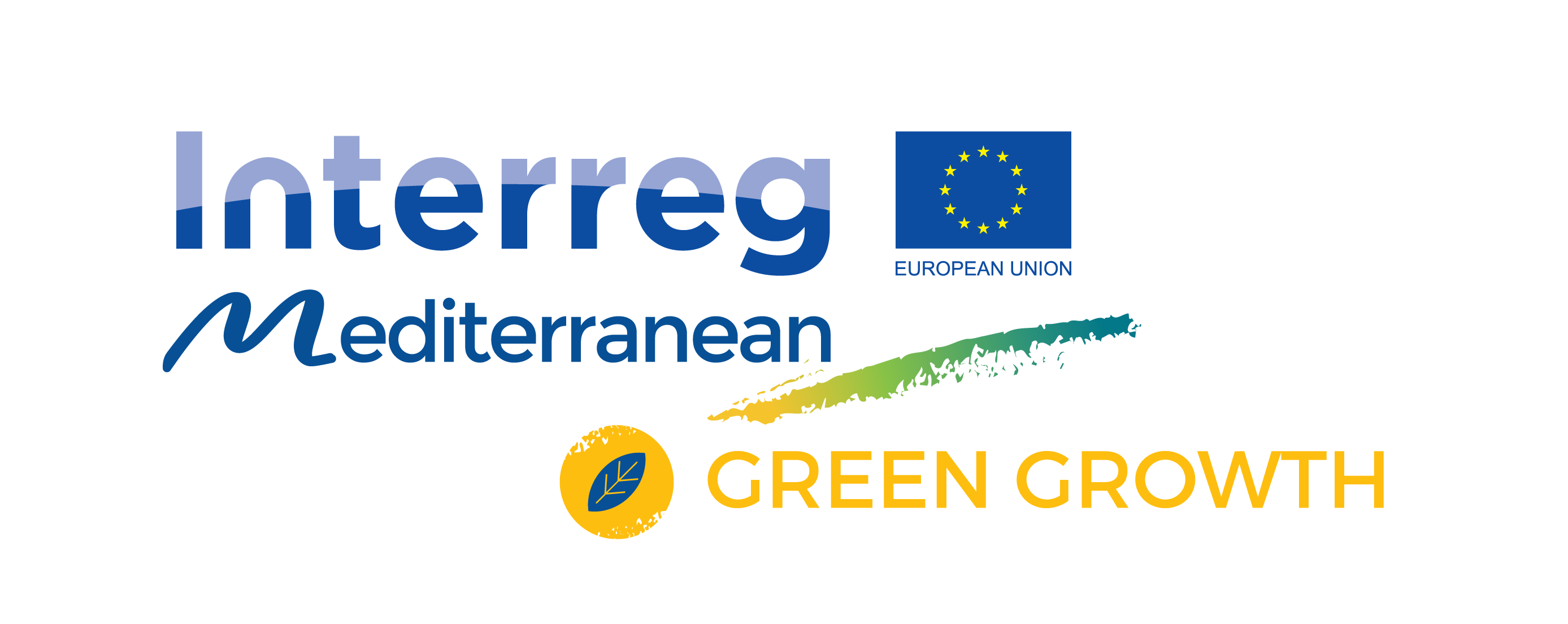The Interreg Euro-Med Academy’s third and final course of ‘Achieving Green Living Areas, from buildings to cities and territories’ called Green Living Territories wrapped up last week. The virtual course launched on July 7 and culminated in a pitching session where participants shared their responses to the challenge on July 13.
The final learning unit of ‘Achieving Green Living Areas’ from building to cities and territories’ focused on applying the concept of the circular economy to the agri-food sector in order to reduce the carbon footprint. Around 20% of the food produced in the EU is either lost or wasted resulting in significant resource and environmental pressures and economic loss. To mitigate these losses, the EU has developed the Circular Economy Action Plan and the Farm to Fork Strategy. The learning unit fits nicely into the framework and goals of both initiatives.
The learning unit was coordinated by the Interreg MED Green Growth Community (GGC) CUEIM, REVOLVE and Beta Tech Center. In the launching session on July 7, Patricia Carbonell (REVOLVE) – Communications Manager for Green Growth – introduced the course by saying: ‘We want to provide you with opportunities to learn how to take action, to influence policies, [and] how to use the tools the Green Growth Community has been advancing on the ground’.

Introduction slide of the Green Living Territories learning unit
The learning unit was geared towards experimental learning through interactive tools such as Circulab’s Value Chain Canvas and Partner Map. Through these tools, e-lessons, and an interactive forum with experts, participants were expected to gain skills for applying current solutions and highlight potential ways to implement them in a more sustainable way. Participants were given about a week to individually go through the lessons and quiz themselves and complete the challenge.
Participants were challenged to apply the knowledge learned through e-lessons to the Value Chain Canvas and analyze a specific product in the agri-food chain. The agri-food sector was chosen as circularity is high for food, water, and nutrients.
During the launch, Vanessa Vivian – Co-Founder, and CEO of Circonnact – gave participants an overview presentation of the circular economy. Circonnact is a nonprofit organization that promotes the implementation of the circular economy in Europe and beyond. The circular economy is the opposite of the current linear economy.
The linear economy relies on extracting raw materials and manufacturing them, using them, and then the product turns into waste. On the contrary, the circular economy seeks to replicate nature where ‘waste is food for another species.’ Instead of relying on resources located far from the consumer, the circular economy relies on leveraging local resources. The circular economy also requires cooperation with mutual benefits among stakeholders; ‘the whole value chain cannot be fulfilled alone by even the biggest companies in the world.’
Not only is the circular economy more environmentally sustainable, but there are also significant economic gains. According to Jessica Matthews, head of sustainable investing at JP Morgan Private Bank Barron’s, the circular economy could yield up to $4.5 trillion in economic benefits globally while saving 1.3 billion tons in food waste and 45 trillion gallons of water by 2030.

The linear economy diagram – Circonnact

The Circular Economy diagram – Circonnact
Two businesses were presented to show the possibility of circularity. One of them was Taisi, a fruit and jam company that composts and reuses fruit that is not used for fertilizer in growing new crops. Carnísimsa was the second company presented, a meat company that relies on the local market for resources and production.
Following these presentations, Andreas Ellenberger – Co-Founder and CEO of Circonnact – acted as the Value Chain expert for the course and gave an introduction to the Value Chain Canvas Tool and the supplementary Partner Map tool. This is a systemic and holistic approach which requires an analysis of the entire system starting with the design or the environment the product will be used in, such as a school or a canteen. The Value Chain Canvas enables companies and consumers to understand ‘how can [they can] save the value in the best way’ in every step of the cycle. After this presentation, participants went into breakout rooms to test out the Value Chain Canvas in groups and discuss challenges that plant-based and animal-based products may face.

Value Chain Canvas example for food
In the pitching session, Maria Calderó – Beta Tech Center – shared a presentation of the Value Chain Canvas and Partner Map for Heura Foods products, a plant-based meat company based in Barcelona. Next, Audrey Bailey and Mary Kate Kesler shared their response to the challenge using the Value Chain Canvas to describe solutions to locally sourcing fruit in schools. After the pitches, Maurizio Notarfonso – Project Manager at Federalimentare – gave a presentation about the GGC project PEFMED PLUS and its case studies and tools.
Overall, this free and engaging course provided the participants with circular tools and innovative solutions in the agri-food sector in order to increase resource efficiency and ultimately reduce CO2 emissions along the value chain. Vivian stated, “We all have a role to play to make [the circular economy] happen” and create a better and more sustainable agri-food sector.
